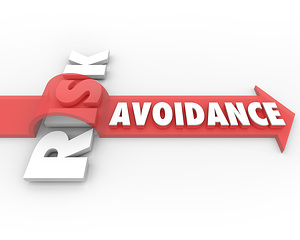 Every food manufacturer worries about contaminants in their products. Food safety incidents can create public relations nightmares that result in costly settlements, recalls, and loss of consumer confidence.
Every food manufacturer worries about contaminants in their products. Food safety incidents can create public relations nightmares that result in costly settlements, recalls, and loss of consumer confidence.
This worry drives many manufacturers to seek ways to eliminate risks however they can. A frequently-asked question that we hear at Plan Automation is: “is it possible to achieve 100% contaminant detection?”
Unfortunately, while there are many ways to minimize contamination risk and improve your odds of detecting contaminants, it’s impossible to guarantee that 100% of all contaminants will be spotted. There will always be some risk involved. Since the risk can never be eliminated, the ultimate goal of a good food safety program is risk reduction.
Why Contaminants Might Slip Past Your Inspection Process
There are a number of reasons why a contaminant might get past your product inspection process, including:
- Contaminant Being Too Small or Too Low in Density to Detect. Especially small or fine contaminants might not be picked up, even by highly-sensitive detection equipment.
- Contaminant Added After Final Inspection Point. If a contaminant is introduced after the final quality/safety inspection point, then it will most likely go undetected.
- Package Interference with Inspection Equipment. Sometimes, the packaging used to keep food products safe for shipping can interfere with certain types of inspection equipment. For example, it’s hard to detect metallic contaminants in a metalized container when inspecting using a metal detector.
- Package Contents Confusing Inspection Equipment. In some cases, the food being inspected can cause some types of product inspection equipment to generate false positives or negatives. For example, products with a complicated texture profile, such as cereal, could confuse older x-ray systems, and food with high salt or moisture content could trip false positives in metal detectors.
Minimizing Contamination Risks
 By knowing the reasons why contaminants might go undetected, food makers can work to minimize their risks.
By knowing the reasons why contaminants might go undetected, food makers can work to minimize their risks.
Issues such as package interference and package contents foiling detection could be overcome by using the right kind of product inspection equipment. For example, if you have metalized film packaging that needs to be inspected, then using an x-ray inspection device is a better solution than using a metal detector.
Adding different types of inspection equipment can help to further minimize the risk of missing a contaminant. This is why some manufacturers use both metal detection and x-ray inspection equipment to inspect their production lines.
Dealing with Food Safety Incidents
While risks can be minimized, they will never be fully eliminated. Reducing risk below a certain point requires exponentially greater and greater resources while producing diminishing returns.
So, it’s important to be prepared to deal with a food safety incident ahead of time, including:
- Establishing your biggest safety risks
- Taking reasonable measures to guard against those risks
- Documenting your risk prevention processes
- Assembling an incident response process and designating a team to manage it
- When faced with an incident, creating paperwork to document key incident, product, and contaminant details is key to assure proper traceability
Having thorough documentation is especially important, as being able to quickly trace an incident to a specific batch of product can help you quickly recall all at-risk product—minimizing the chances of further incidents. It also helps improve your company’s transparency during an incident so that consumer trust is maintained.
While no quality control process is ever perfect, you can still reduce the risk and impact of a safety incident through careful preparation.
Faced with potentially contaminated products? Contact the PLAN Automation team right away for more information on our Emergency Reclaim Inspection Services!




